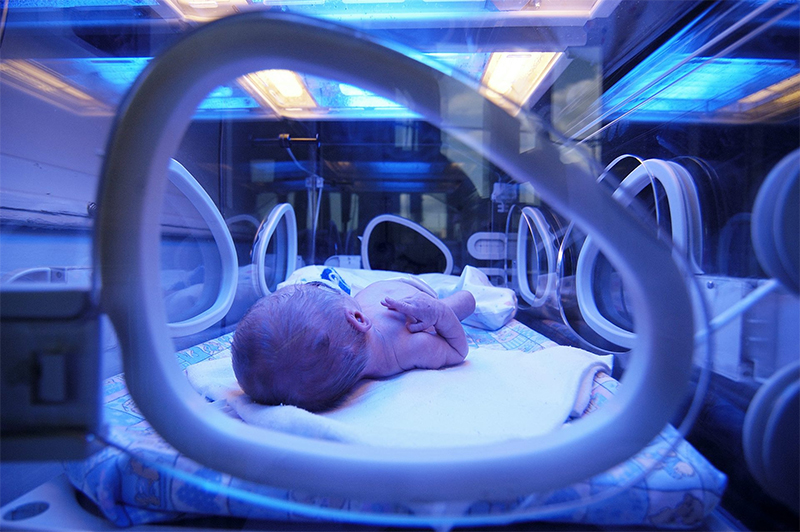Birth Injuries in North Dakota
Birth injuries are distressing events that can have long-lasting effects on both the newborns and their families. Over the past decade, the state of North Dakota has seen numerous instances of birth injuries that have impacted families and newborns. These incidents have raised concerns and shed light on the importance of maternal and infant healthcare in the state.
From 2010 to 2020, North Dakota has recorded a range of birth injuries. While the overall incidence rate has remained relatively stable, there have been fluctuations in specific types of injuries.

2010-2020 North Dakota Birth Injuries
1. In North Dakota, approximately 1 in every 33 babies is born with a birth defect.
2. Approximately 300 babies are born with birth defects in North Dakota each year.
3. Around 20% of infant deaths in North Dakota each year are attributed to birth defects.
4. The perinatal mortality rate in North Dakota was 6.2 per 1,000 live births and fetal deaths in 2019.
5. The preterm birth rate in North Dakota was 9.8% in 2020, which is higher compared to the rate in 2019.
6. The infant mortality rate in North Dakota experienced a decrease of more than 19% from 2010 to 2020.
7. The infant mortality rate in North Dakota decreased over the last decade, from 6.8% in 2010 to 5.5% in 2020.
8. In 2020, North Dakota recorded an infant mortality rate of 5.5, with 55 infant deaths per 1,000 live births.
9. In 2020, among 55 infants, 65.5% experienced infant deaths during the neonatal stage, with the remaining 34.5% occurring in the post-neonatal stage
10. In North Dakota in 2020, the neonatal mortality rate was 3.6 per 1,000 live births. [1]
1. Every 33rd newborn in North Dakota is born with a birth defect.
In the state of North Dakota, approximately 1 in every 33 babies is born with a birth defect. These birth defects can range from minor issues that may resolve on their own to more serious conditions that require lifelong medical care and attention. Some common birth defects seen in North Dakota include heart defects, cleft lip/palate, neural tube defects, and Down Syndrome. [1]

2. Around 300 babies in North Dakota are born with birth defects annually.
Birth defects are a significant concern for families in North Dakota, with around 300 babies being born with these conditions each year. These birth defects can range from relatively minor issues to more serious and life-threatening conditions.
Some common birth defects seen in North Dakota include heart defects, cleft lip and palate, spina bifida, Down syndrome, and clubfoot. These conditions can have a major impact on the newborn’s health and well-being, as well as the emotional and financial toll on their families. [1]
3. Birth defects account for around 20% of infant deaths in North Dakota annually.
Unfortunately, birth defects are a leading cause of infant mortality in North Dakota, accounting for approximately 20% of all infant deaths each year. These conditions can result in complications that may be fatal or require extensive medical intervention.
When healthcare providers and policymakers in North Dakota prioritize preventive measures, early detection, and appropriate treatment for birth defects it will reduce the impact of birth injuries on newborns and families. [1]

4. In 2019, the perinatal mortality rate in North Dakota was 6.2 per 1,000 live births and fetal deaths.
In 2019, the perinatal mortality rate in North Dakota was 6.2 out of 1,000 live births and fetal deaths. This statistic is slightly higher than the national average of 5.9 out of 1,000 for the same year.
The perinatal mortality rate is an important metric for measuring the health and safety of pregnant women and their fetuses. North Dakota’s rate has been steadily decreasing in recent years, due to improved prenatal care and public health initiatives aimed at reducing birth complications. [2]
5. The preterm birth rate in North Dakota increased to 9.8% in 2020, compared to the rate in 2019.
In 2020, the preterm birth rate in North Dakota was 9.8%, higher compared to the rate in 2019 which was 9.5%. According to data from the Centers for Disease Control and Prevention, this is a 0.3% increase from 2019. Preterm birth is defined as any baby born before 37 weeks gestation and can be caused by a variety of factors, including medical complications, environmental stressors, and lifestyle choices.
Preterm birth is a major cause of infant mortality and can increase the risk of long-term health complications for newborns. Several factors can contribute to an increased likelihood of preterm birth, and it is possible for multiple factors to occur simultaneously. Risk factors such as hypertension, diabetes, smoking, and unhealthy weight often precede pregnancy.
To reduce preterm births, the North Dakota Department of Health has implemented a number of initiatives to improve access to prenatal care and encourage healthy lifestyles among pregnant women. [3]

6. The infant mortality rate in North Dakota decreased by over 19% between 2010 and 2020.
North Dakota has seen a significant decrease in its infant mortality rate since 2010. Over the last decade, North Dakota’s infant mortality rate has decreased by 19 percent. In 2010, the infant mortality rate in the state was 6.8 out of 1,000 live births. By 2020, this number had decreased to 5.5 out of 1,000 live births.
The decrease is attributed to a combination of improved medical care and public health initiatives such as prenatal screenings and post-birth monitoring. [4]
7. The infant mortality rate in North Dakota decreased over the last decade, from 6.8% in 2010 to 5.5% in 2020.
Infant mortality in North Dakota has seen a dramatic decrease over the last decade. According to the Centers for Disease Control and Prevention (CDC), the infant mortality rate in North Dakota decreased from 6.8% in 2010 to 5.5% in 2020, a significant drop of 1.3%.
The state’s public health sector has taken serious strides to reduce infant mortality by targeting preventable causes of death such as preterm birth, low birth weight, and birth injuries.
North Dakota has implemented a number of initiatives to improve access to prenatal care and encourage healthy lifestyles among pregnant women. These initiatives have helped reduce the rate of infant mortality in the state, but there is still more work to be done to ensure that all babies are born healthy and safe. [4]

8. In North Dakota in 2020, there were 55 infant deaths out of 1,000 live births, resulting in an infant mortality rate of 5.5.
In 2020, North Dakota saw a total of 1,000 live births. Out of these, 55 resulted in infant death. This statistic translates to an infant mortality rate of 5.5 out of 1,000 live births, which is slightly higher than the national average of 5.4 out of 1,000 live births.
The proportion of birth-related injuries in infants has been increasing in the US. However, North Dakota saw a decrease in its infant mortality rate over the past decade. [5]
9. In 2020, out of 55 infants, 65.5% of infant deaths occurred during the neonatal stage, while the remaining 34.5% occurred in the post-neonatal stage.
Out of the 55 infant deaths reported in North Dakota in 2020, 36 occurred during the neonatal stage and 19 occurred during the post-neonatal stage. This translates to a neonatal mortality rate of 65.5%, while the post-neonatal mortality rate was 34.5%.
The majority of infant deaths in North Dakota in 2020 were due to prematurity, congenital malformations, birth asphyxia, and SIDS (sudden infant death syndrome). These are some of the most common causes of infant mortality in the United States and North Dakota. [6]

10. In North Dakota in 2020, the neonatal mortality rate was 3.6 per 1,000 live births.
In 2020, the neonatal mortality rate in North Dakota was 3.6 per 1,000 live births. The North Dakota Department of Health reported that there were 34 neonatal deaths in 2020, with a majority of those occurring among infants born prematurely or with low birth weight.
The neonatal mortality rate in North Dakota is an important indicator of the overall health and well-being of newborns in the state. The state’s public health sector has implemented a number of initiatives to reduce this rate, including improving access to prenatal care and promoting healthy lifestyles among pregnant women. While there has been some progress, more work needs to be done to ensure that all babies are born healthy and safe. [6], [7]
If your family has been affected by a birth injury in North Dakota, don’t hesitate to reach out to Goldberg & Loren’s compassionate team of experienced birth injury attorneys.
Sources:
[1] March of Dimes. (n.d.). https://www.marchofdimes.org/peristats/tools/birthdefectsprofile.aspx?reg=38
[2] Perinatal mortality rates: North Dakota, 2014-2019. (n.d.). March of Dimes | PeriStats. https://www.marchofdimes.org/peristats/data?reg=38&top=6&stop=371&lev=1&slev=4&obj=1&sreg=38
[3] Prematurity Profile. (n.d.). https://www.marchofdimes.org/peristats/tools/prematurityprofile.aspx?reg=38
[4] Infant mortality rates: North Dakota, 2010-2020. (n.d.). March of Dimes | PeriStats. https://www.marchofdimes.org/peristats/data?reg=38&top=6&stop=91&slev=4&obj=1&sreg=38&eny=2020&sty=2010
[5] Infant mortality rates: North Dakota and US, 2019-2020. (n.d.). March of Dimes | PeriStats. https://www.marchofdimes.org/peristats/data?reg=38&top=6&stop=91&slev=4&obj=1&sreg=38&cmp=99&eny=2020&sty=2019
[6] Age at infant death: North Dakota, 2020. (n.d.). March of Dimes | PeriStats. https://www.marchofdimes.org/peristats/data?reg=38&top=6&stop=106&slev=4&obj=1&sreg=38&chy=2020
[7] North Dakota Fast Facts 2020. (n.d.). Retrieved 2020, from https://www.hhs.nd.gov/sites/www/files/documents/DOH%20Legacy/Vital/ff2020.pdf

